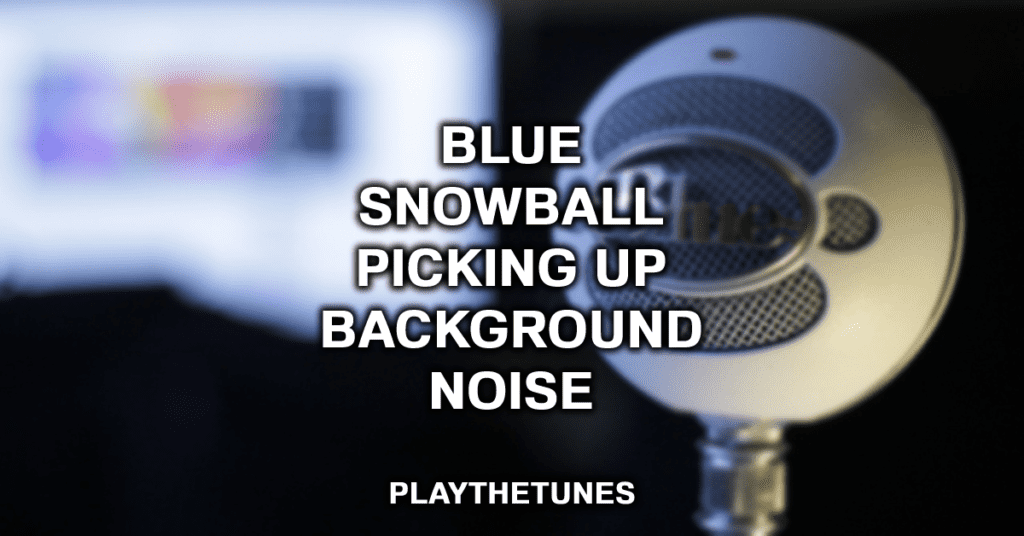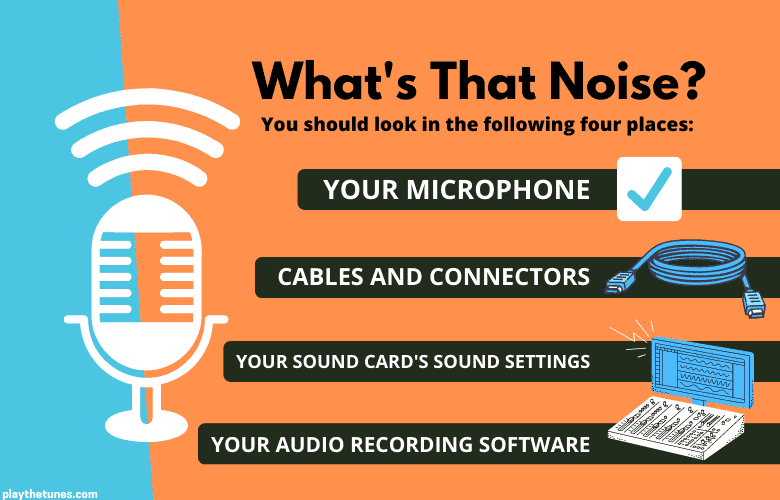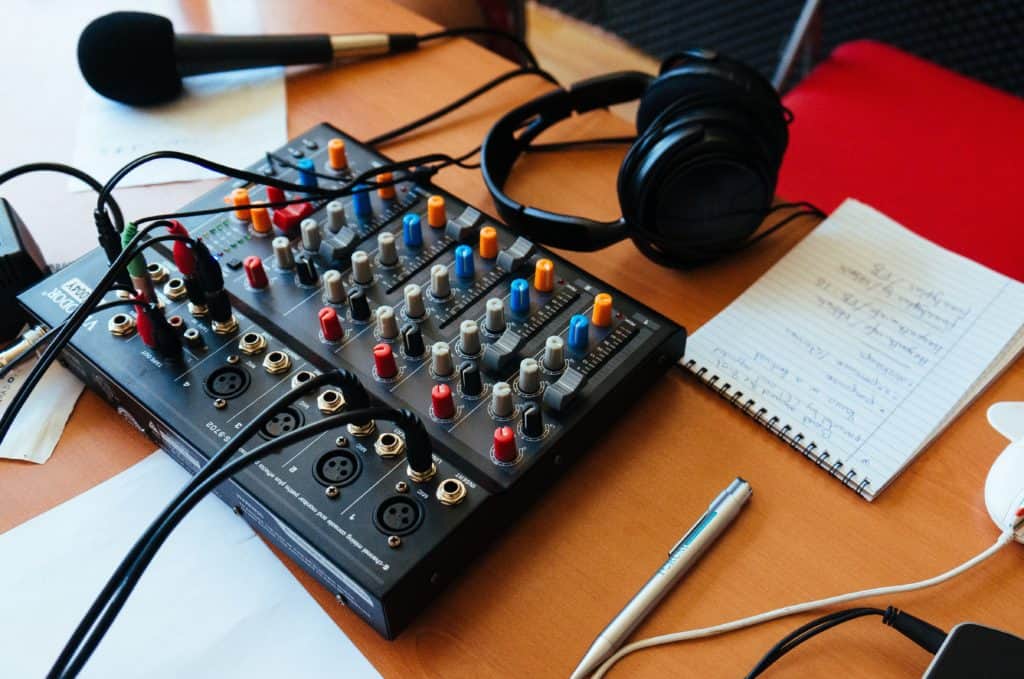Configure Blue Snowball Ice to Not Pick Up Background Sound
Nowadays, especially during this Pandemic, people have often used digital platforms for working, attending meetings, and online classes. A microphone is nearly always used while speaking in front of an audience.
The microphone's purpose is to let your listeners hear you. But it won't be able to do so if you don't know how to use it or deliberately fight against it. In that case, everyone wants to make their voices loud and clear and remove the possible ambient noise. In this case, a Blue Snowball mic might do the trick.

What is a Blue Snowball Mic?
The Blue Snowball mic is a one-of-a-kind microphone with a quality that is suitable for all audio demands. The unique condenser provides crystal clear clarity, which I've found exceptional for both speaking and singing.
It incorporates a vertical desktop stand, allowing you to conserve room on your desk. Furthermore, the height is adjustable. The cardioid pickup pattern, which is a unidirectional polar form, is used by this microphone. The device implies that whatever audio you directly send into it will be captured, while any noises coming from the sides or back will be muffled.
This is the most common pickup pattern for activities such as streaming or recording voice-over work. The Snowball mic is, of course, a USB microphone, as Blue is famous for. Many individuals will benefit significantly from this, beginning with the fact that it is simple plug-and-play.

Expert Tip: Condenser microphones frequently require Phantom Power, which can only be supplied by connecting the mic to a microphone preamplifier. The Snowball mic, on the other hand, links to your computer, and that's it!
Finally, some technical information. The Blue Snowball mic features a frequency response of 20Hz – 18kHz, which provides excellent bass performance while maintaining high-end performance.
This provides your recorded audio with a lot of depth and space, making it seem professional. The audio output features a sampling rate of 44.1 kHz and a bit depth of 16 bits. This is also referred to as CD quality.
The compact Blue Snowball microphone makes it handy, and its universal threaded attachment makes it highly portable. It's simpler to stow in a laptop bag or backpack, making it an excellent choice for on-the-go recording.
Do you need to record an impromptu podcast or attend a last-minute meeting? The Snowball has your back and is easy to install on the fly due to the accompanying desktop stand.
What is a Background Noise?

Noise occurs in various forms and is a catch-all phrase for everything people don't want on their recordings. It might just be some ambient noise that gives context to a location recording but is excessively loud and distracting from the topic.
Alternatively, it might be that the audio is being plagued by sporadic and unpredictable electronic interference. It is any background sounds that are unnecessary. People want it eliminated.
Ways to stop Background Noise
If your microphone is picking up undesirable sounds, you can take measures to reduce unwanted sound disturbance and static. While you may not be able to eliminate ambient noise, you can significantly reduce interference. You may determine how to decrease ambient sounds on microphones by first determining the type of microphone you require.
Whether you work from home and frequently have difficulty being understood, are recording audio clips or music, or are just trying to communicate clearly, there are many things you can do to ensure that you are heard as clearly as possible. These can be physical, wiring, or software-based equipment or tools.
Expert Tip: How can an unwanted sound disturbance on microphones be reduced? There are two possible solutions: alter your configuration, upgrade your hardware, or download new software.
Depending on the sound source tool you're using to capture sounds, you may reduce noise in your recordings by changing the amount of your microphone boost or ambient noise reduction on your laptop.
Additionally, you can eliminate the origin of ambient noise, minimize your exposure to other sounds, modify the environment surrounding your microphone, or utilize suitable noise reduction software. With some effort, you can learn how to decrease ambient noise on a microphone.
Why is My Mic Suddenly Picking up Background Noise?
The presence of sound disturbance picked up by your voice recorder or microphone might be one of the most frustrating difficulties you can experience when recording. Most of the time, the unwanted audio disturbance is composed of buzzing or turbulence rather than actual sounds.
Your microphone may get unwanted voice disturbance for a variety of reasons. Whether it's a technical issue with your gadget or a result of the setting you're in, you're in trouble.
In addition to the specifications of your recording equipment, you should investigate the circuit and digital system settings of your sound office software to discover the origin of each of the difficulties listed below.
1. What's That Noise?
A sound source that records unwanted audio disturbance and ignores spoken sounds isn't indeed recording audio. Instead, you're experiencing electronic disturbance or noise from a power supply unit nearby.
Any audio source nearby should be recorded if an instrument is recording correctly. This includes your voice. There's no feasible way to exclude only the sounds you want, recording noises all around you.
Expert Tip: Rattling, trembling, buzzing, and throbbing are examples of ambient noise. However, if your source device is analog, you may hear a faint semblance of your speech over the surrounding noise instead of having no audio captured at all.
Your voice will either come through or it won't while utilizing a digital data instrument. In digital sound capturing, there isn't much of a middle ground.
The first step in resolving the unwanted sound disturbance issue is identifying the cause of the problem. You should look in the following four places:
- Your microphone
- Cables and connectors on your computer
- Your sound card's sound settings
- Your audio recording software

2. Finding the Root Cause
When it comes to recording problems in your studio, it's typically best to start with the basics. Over the years, many professional recording artists have ended up destroying their recording studio to solve an issue that is as easy as flipping a switch or checking if the connections are in a correct position.
To save you energy, here are some typical issues and solutions that might cause your microphone to take up unwanted sound disturbance:
Examine Your Connections
When you're in the studio, your connection should be the first thing you check, and a recording source gets an unwanted sound. Circuit sound may be transferred via a bad connection now and then.
Always look for room to move in connections while checking them for finalization. A damaged or deformed connector wire or plug may be blamed for an unreliable connection that makes a lot of noise.
Examine the Configuration on Your Equipment

If you're confident that all of your connections are safe and complete, I'd recommend that you check your microphone settings. Numerous recording systems include a button that permits the selection of various polar patterns for directional recording.
Your recording equipment's omnidirectional magnetic occurrence will capture audio from all sources. This may result in your audio disturbance being recorded more than your voice.
Rather than speaking straight into a microphone capsule, talk into a high-sensitivity magnetic configuration. Choosing suitable sequences may introduce additional indirect and external sounds into an audio recording, possibly overpowering it.
Inspect Your System Software's Sound Settings
Regardless of the platform you're using; you can probably change the sound settings. These options should allow you to change the default analog input, recordings, audio tracks, and recorder volume levels, accuracy, and high settings.
Changing your computer's audio conditions may assist reduce ambient sounds captured by your sound recorder. To determine if a sound source is available, use the operating system's sound settings to listen to the gadget's audio.
Monitoring Systems
Because most microphone monitoring is done with headphones, the signal is routed to a separate output. This can give you a misleading impression of what is being captured, and you won't realize the error until you play back the tape and hear nothing except the hum of a dead audio connection.
You can fix this by developing the habit of monitoring during certain intervals before or between takes. You may also seek a piece of audio interface equipment that employs LED lights to display a specific input mode.
I want to emphasize that a well-organized recording setting helps prevent the microphone from getting audio disturbances and not voice audio difficulties. Still, it also helps to work more effectively.
The Bottomline
To sum it all, the Blue Snowball mic is a one-of-a-kind microphone with a quality suitable for all audio demands. It helps the user have good quality and clear voice when recording to avoid ambient sounds from your working station or your equipment's technical problems.
Various problems cause ambient sounds when you are recording. You have to figure it out first and then find the solution listed above for your unwanted sound problems. If you have additional comments or questions, you can type them below.
mitchellpultooper1981.blogspot.com
Source: https://playthetunes.com/blue-snowball-picking-up-background-noise/
0 Response to "Configure Blue Snowball Ice to Not Pick Up Background Sound"
Postar um comentário